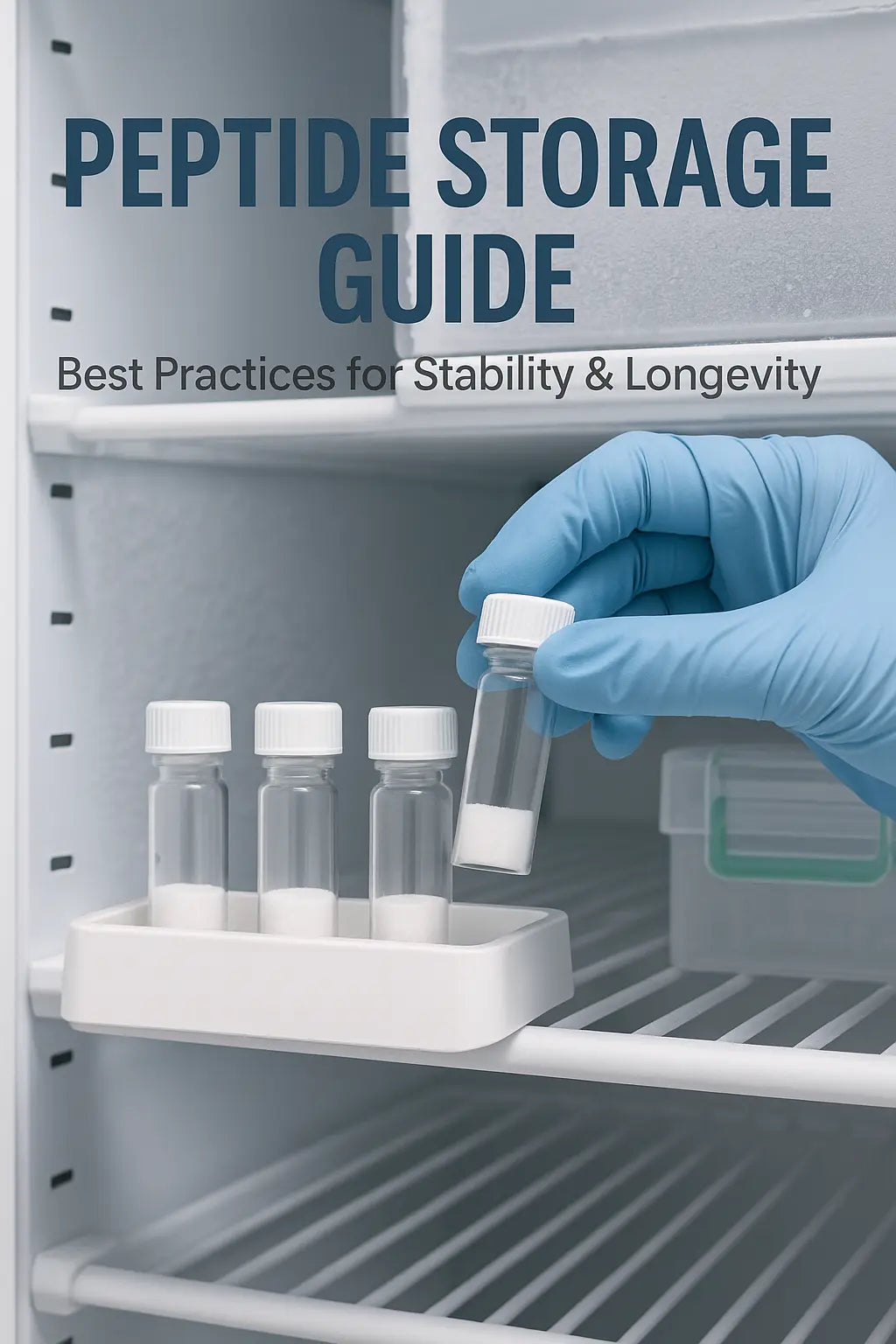
Peptide Storage Guide | Best Practices for Stability & Longevity
Share
Why Proper Peptide Storage Matters
Proper peptide storage is essential to maintain peptide stability and protect research integrity. Correct handling can preserve peptides for years while preventing degradation, oxidation, or contamination. While some peptides are more fragile than others, following best practices ensures their long-term reliability across a wide range of laboratory applications.
Short-Term vs Long-Term Peptide Storage
Once peptides arrive, they should be kept cold and away from light:
- Short-Term Storage: Lyophilized peptides are typically stable at room temperature for several weeks. For daily or weekly use, refrigeration at 4°C (39°F) is usually sufficient.
- Long-Term Storage: For months to years, peptides should be kept at -80°C (-112°F) to preserve maximum stability.
It is important to avoid frost-free freezers, as defrost cycles can cause temperature fluctuations that compromise peptide integrity.
Preventing Oxidation and Moisture Damage
Two of the most common threats to peptide stability are oxidation and moisture contamination. To minimize these risks:
- Always allow peptides to warm to room temperature before opening vials taken from cold storage.
- Keep containers sealed tightly when not in use.
- For long-term storage, reseal vials under an inert gas such as nitrogen or argon.
- Peptides containing cysteine (C), methionine (M), or tryptophan (W) are especially prone to oxidation and require extra care.
Aliquoting Peptides for Research
Repeated freeze-thaw cycles can cause irreversible degradation. To avoid this, many researchers divide peptides into aliquots—small portions stored in separate vials—so that only the amount needed for each experiment is thawed at one time. This significantly extends peptide lifespan.
Peptide Storage in Solution
Peptides are far less stable in solution compared to lyophilized form. Peptides in solution are susceptible to bacterial growth and degradation, especially if they contain Cys, Met, Trp, Asp, Gln, or N-terminal Glu.
If storage in solution is absolutely necessary:
- Use sterile buffers at pH 5–6.
- Aliquot into smaller volumes to avoid repeated thawing.
- Keep refrigerated at 4°C (39°F) for up to 30 days, or freeze for longer stability.
For additional guidance, see our Peptide Solubility Guide.
Choosing the Right Storage Containers
Peptides should be stored in clean, chemically resistant containers. Options include:
- Glass vials: Clear, chemically stable, and ideal for long-term storage.
- Polypropylene vials: Translucent but resistant to chemicals and breakage.
- Polystyrene vials: Clear but less chemically resistant.
Many peptides are shipped in plastic containers for safety during transport, but they may be transferred to glass vials for long-term use.
General Storage Guidelines
- Keep peptides in a cold, dry, dark environment.
- Avoid repeated freeze-thaw cycles.
- Protect from air and light exposure.
- Store lyophilized peptides whenever possible rather than in solution.
- Aliquot peptides for experimental use to preserve long-term stability.
Related Resources
For a deeper understanding of peptide handling and stability, explore:
- Intro to Peptides – foundational knowledge of peptide structure and function.
- Peptide Purity Guide – how purity is measured and why it matters.
- BPC-157 + TB-500 Blend – one of our most studied peptide blends.

